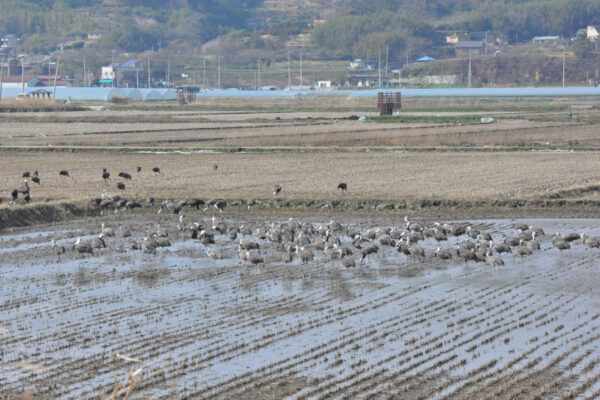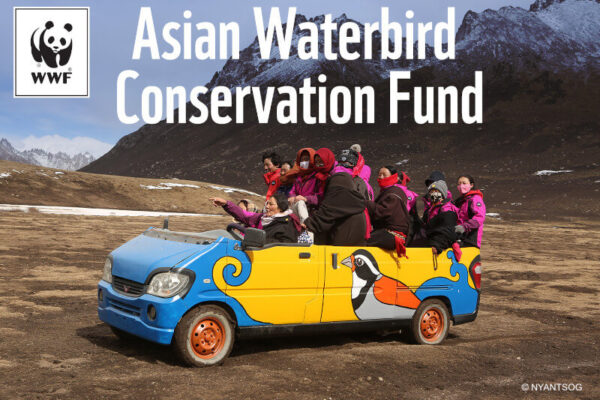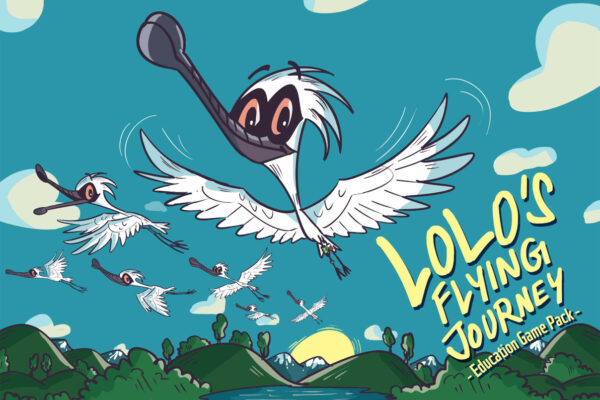-
Updates of HPAI recorded in East Asian – Australasian Flyway
Since November 2021, a series of unprecedent outbreaks of HPAI (Highly Pathogenic Avian Influenza) occurred in western Eurasia and depleted significant percentages of waterbirds and seabird populations: Barnacle Goose in Scotland, Eurasian Crane in Israel, Dalmatian Pelican in southeastern Balkans and seabirds along the coast of the Atlantic Ocean. However, no significant incidents were reported from the East Asian-Australasian Flyway except die-offs of several hundred seabirds, such as Tufted Puffins and Rhinoceros Auklets, recorded around the waters of Kunashir Islands in southern Kuril in August 2022, which no official evidence of an HPAI outbreak was indicated by the time of writing. Yet, outbreaks of HPAI was recorded in cranes and other migratory waterbirds in the EAA Flyway in recent two months. Hooded Cranes in Suncheon Bay © Suncheon City On 1 November 2022, a Hooded Crane was found dead at Izumi, Japan and about one week later it was confirmed to be HPAI positive. Numbers of dead birds escalated since, reaching a daily peak of 74 dead Hooded Cranes collected on 17 November. Dead White-naped Cranes were recorded starting on 14 November. The number of daily totals of dead cranes decreased to less than 15 carcasses found from 8 December. As of 23 December 2022, the total number of carcasses of Hooded Cranes collected at Izumi were at least 1,097 and White-naped Crane at least 47. Three Hooded Crane carcasses testing positive of HPAI were collected from Kyushu: 2 from Isahaya and 1 from Akune (Information from the website of Ministry of the Environment Japan, link). Movements of cranes departing from Izumi, Japan were observed from late November. At the same time, there was a surge in the number of Hooded Cranes wintering at Suncheon, Ro Korea. It was speculated some cranes moved from Izumi to wintering sites in Ro Korea. This was proven by Hooded Cranes tracked by Dr Li Xianda in China (from Izumi, Japan to Chonsu Bay, Ro Korea in late November 2022). However, such movement is not irregular as Dr Li’s tagged Hooded Cranes were also recorded travelling between wintering sites in Japan and Ro Korea in 2020 and 2021 (Per. comm. from Li Xianda to Simba Chan). The number of Hooded Cranes at Suncheon reached a peak of several thousand birds in late November but started to decrease to about 3,500 birds in early December. It is believed cranes moved to Chonsu Bay and Galsa Bay, other wintering sites of Hooded Cranes in Ro Korea. The first dead Hooded Crane was found at Suncheon on 13 November. As of 12 December, 158 dead Hooded Cranes and one dead White-naped Crane were found in Ro Korea. On 20 November one sick Red-crowned Crane was captured in Kushiro, Japan and it was tested HPAI positive one week later. However, this should be seen as an independent case of HPAI from the wintering grounds in western Japan. In response to the HPAI outbreak, the Crane Working Group of the EAAFP held an emergency zoom meeting on 12 December and a proposal for reactions to the HPAI in the EAAF region was submitted to the EAAFP Secretariat. The Crane Working Group also sent warnings to other crane wintering sites. So far no abnormal crane deaths has been reported from China and the wintering sites were advised not to artificially feed cranes to avoid concentrations of cranes and other wintering birds. The Crane Working Group has also contacted crane researchers in Israel on possible links between the present incident and the HPAI outbreak at Hula Valley in December 2021, in which about 8,000 Eurasian Cranes died. Advice from Israeli colleagues was to remove crane carcasses especially those in water as quickly as possible and also avoid artificial feeding that would result in concentration of birds. In late November to early December, 34 dead Oriental Storks were found near Tianjin, at the coast of Bohai, China. Poisoning from poachers and HPAI have been ruled out and the cause of death is still under investigation. On 24 November and 12 December, dead Black-faced Spoonbills were found at Mai Po Nature Reserve and Hong Kong Wetland Park in Hong Kong S.A.R. respectively, were confirmed to be HPAI positive. On 9 December another dead Black-faced Spoonbill collected at Kumamoto Prefecture, Japan was also found to be HPAI positive. It is speculated more birds may have died during migration but were not found or reported. At the time when this news release was written, catastrophic HPAI outbreaks are occurring in Latin America, particularly along the coast of Peru where more than 20,000 dead seabirds (majority Peruvian Pelicans) recorded. The massive outbreaks of HPAI that started in western Eurasia in late 2021 are now being recorded in the East Asian Australasian Flyway. The Crane Working Group contacted other species working groups and task forces and almost all agreed on actions that should be taken as soon as possible. While we proposed strategies to be discussed at meetings in 2023, we also urge managers and local stakeholders at important waterbird/seabird sites to take precautions as suggested below, and countries along the flyway should keep in close communication on new cases of outbreaks. Recommendation to important waterbird/seabird sites: Have at least one staff member in charge of biosecurity. Have a contingency plan following the guidance of national authorities in case of outbreak of avian influenza and other avian diseases. Ideally the plan will be rehearsed every year before migratory seasons so staff and volunteers of the site understand all procedures and their roles in case of emergency. Have a contact list of agencies and institutions that can provide support during an outbreak. Have regular monitoring and surveillance on wild birds, particularly when outbreaks are reported along the flyway. In case sick and/or dead birds are found, try to collect them without causing disturbance to other birds. Although the risk of HPAI transmitting to human is low, personal protective equipment has to be used when handling sick or dead birds and the methods of collection and handling should follow national guidelines. Photographing the dead bird for records and to identify the species and gender. Useful references: 2007. Wild Birds and Avian Influenza: an introduction to applied field research and disease sampling techniques. Edited by D. Whitworth, S.H. Newman, T. Mundkur and P. Harris. FAO Animal Production and Health Manual, No. 5. Rome. (download from here) CMS Scientific Task Force on Avian Influenza and Wild Birds Issues Recommendations (2022) (visit the webpage here). Hacen Mohamed El-Hacen. 2022. Workshop report: Development and consequences of the recent bird flu outbreak among Sandwich terns in the Wadden Sea and adjacent areas (download from here) Scientific Task Force on Avian Influenza and Wild Birds statement on: H5N1 Highly Pathogenic Avian Influenza in poultry and wild birds: Winter of 2021/2022 with focus on mass mortality of wild birds in UK and Israel (2022) (download from here) Wildlife Health Australia (2021) The sixth issue Wild Bird News June 2021 - National Avian Influenza Wild Bird Surveillance Newsletter (download from here) More references and useful links are available on webpage of Avian Influenza Working Group (link), News links: Ministry of the Environment, Japan: 高病原性鳥インフルエンザに関する情報 | 自然環境・生物多様性 | 環境省 (env.go.jp) News about dead seabirds washed to Kunashir Islands in southern Kuril (available on 12 August, 2022, visit the webpage here) Article prepared by Crane Working Group.
Continue reading -
Not just funding but also capacity-building opportunities! Asian Waterbird Conservation Fund (AWCF) is now receiving new applications!
The AWCF was established by WWF-Hong Kong in July 2005 to provide financial support for projects at sites of importance for migratory…
Continue reading -
World Migratory Bird Day: WWF collaborates with EAAPF to Launch an Updated Education Pack “Lolo Flying Journey” about Black-faced Spoonbill
In line with the celebration of “World Migratory Bird Day” on 14 May to raise awareness on protecting migratory birds and their habitats, WWF Hong Kong collaborates with the East Asian – Australasian Flyway Partnership (EAAFP), with the generous support from Incheon Metropolitan City of the Republic of Korea and Hanns Seidel Foundation, launches the updated Education Pack “Lolo Flying Journey” about Black-faced Spoonbill today. The updates of the education pack was brought forward under the Incheon-Hong Kong Sister Site Arrangement signed in 2019. “Lolo Flying Journey” is an Education Pack featuring Black-faced Spoonbill to educate knowledge about migratory birds and wetland conservation. Through a fun and interactive game, participants would play the role as a Black-faced Spoonbill and experience their thrilling and exciting migration journey. The Black-faced Spoonbill is classified as an ‘Endangered' species on The International Union for Conservation of Nature (IUCN) Red List of Threatened Species. There are only a little over 6,000 individuals in the world and the bird is inherently vulnerable to extinction. They, together with millions of other migratory birds, migrate along the East Asian – Australasian Flyway (EAAF) twice every year and would encounter different situations which affect their survival. The game also conveys the importance of conserving different wetlands, between Mai Po Nature Reserve and Inner Deep Bay (EAAFP FNS 003) in Hong Kong, the wintering ground, and Songdo Tidal Flat (EAAFP FNS 145) in Incheon, Ro Korea, the breeding ground, for the protection of Black-faced Spoonbill and other migratory waterbirds. The Education Pack is targeting 6 to 15 year-olds, to enhance their understanding of human-nature environment, promote their interest and concern for Nature (particularly about migratory birds and wetlands), widen their horizon on global issues, and help them to develop positive value towards conservation of natural environment and wildlife by adopting a sustainable lifestyle. It includes an interpretation note and a manual for teachers and educators, English, Chinese and Korean versions are available. The original version of “Lolo Flying Journey” was in use for over 10 years in Hong Kong for environmental education. The new version provides more updated information, while WWF and EAAFP are also expecting to bring the pack to wider users in other places. Training and learning activities for teachers and students would be held soon. Digital version of updated “Lolo Flying Journey” can be downloaded from the following sources: (English version) https://www.wwf.org.hk/en/reslib/education/wetlands/ (Traditional Chinese version) https://www.wwf.org.hk/reslib/education/wetlands/ (Korean version) Link About WWF-Hong Kong WWF is a leading global conservation organization, with a network active in more than 100 countries. WWF’s mission is to build a future in which humans live in harmony with nature. WWF-Hong Kong has been working since 1981 to deliver solutions for a living planet through conservation, footprint and education programmes, with the aim of transforming Hong Kong into Asia’s most sustainable city. For more information, please visit: wwf.org.hk (Chinese version) 響應「世界候鳥日」 WWF聯同EAAFP推出更新版教材套「Lolo飛行手記」 推廣遷徙水鳥和濕地保育 為響應5月14日的「世界候鳥日」,喚起全球關注保護候鳥及其生境,世界自然基金會香港分會(WWF)與東亞—澳大利西亞遷飛區伙伴關係協定(East Asian – Australasian Flyway Partnership (EAAFP)) 合作,並承蒙韓國仁川市政府和漢斯·賽德爾基金會(Hanns Seidel Foundation)的支持,推出更新版遊戲教材套「Lolo飛行手記」。 「LoLo飛行手記」是一套以候鳥遷徙和濕地保育為主題的教材套,透過生動有趣的遊戲,讓參加者化身成黑臉琵鷺,體驗刺激又驚險的遷徙旅程。黑臉琵鷺被《世界自然保護聯盟紅色名錄》列為「瀕危」物種,全球數目只剩6千多隻,面臨絕種威脅。牠們每年兩次和成千上萬其他品種的候鳥沿著東亞—澳大利西亞遷飛區遷徙,有機會遇上各種各樣的狀況,影響牠們的生存。遊戲帶出保育各地的濕地對遷徙候鳥的重要性,包括黑臉琵鷺的渡冬地—香港的米埔自然保護區和內后海灣 (EAAFP FNS 003),以及其繁殖地—韓國仁川的松島潮灘(EAAFP FNS 145) 。 本教材套旨在讓6至15歲的學童認識人類與大自然的關係、提升他們對大自然的興趣及關注 (尤其有關候鳥和濕地)、擴闊國際視野,最終幫助他們建立對保護自然環境和野生生物的正確價值觀,並實踐符合可持續原則的生活習慣。教材套包括使用手冊、遊戲冊和講解重點,供老師和教育工作者參考。現時設有英文、繁體中文和韓文的版本。 香港政府和韓國仁川市政府於2019年簽訂諒解備忘錄,令香港米埔內后海灣和韓國仁川松島潮灘成為東亞─澳大利西亞遷飛區鳥區網絡下的「姊妹鳥區」,並促成是次推出更新版教材套。第一代的「LoLo飛行手記」已推出超過十年,主要對象為香港本地群體。更新版為參加者提供更合時宜的資訊,WWF和EAAFP更期望將教材套推廣至全球其他地方使用—第一站將會為南韓的教師和學童舉辦教材套培訓和學習活動。 電子版的「LoLo飛行手記」教材套可於以下網址下載: (英文版)https://www.wwf.org.hk/en/reslib/education/wetlands/ (中文版)https://www.wwf.org.hk/reslib/education/wetlands/ (韓文版) (link) 關於世界自然基金會 世界自然基金會是全球性環保組織,分會及辦事處遍佈全球逾 100 個國家。世界自然基金會的使命是建立人類與大自然和諧共存的未來。世界自然基金會香港分會自 1981 年成立,透過保育及教育項目提出解決方法,推動香港成為亞洲最可持續發展的城市。查詢更詳細資料:wwf.org.hk WWF와 EAAFP, 세계 철새의 날 기념 “저어새 롤로의 하늘을 나는 여행" 개정판을 출시하다 EAAFP(동아시아-대양주 철새이동경로 파트너십)와 세계자연보호기금(WWF) 홍콩지부는 인천광역시와 한스 자이델 재단의 아낌없는 지원을 받아 5월 14일 "세계 철새의 날"을 기념하여 제작된 교육자료 "저어새 롤로의 하늘을 나는 여행" 개정판을 출시한다 밝혔다. 교육자료 제작은 2019년에 체결된 인천-홍콩 자매서식지 협정에 따라 추진되었다. "저어새 롤로의 하늘을 나는 여행"은 철새와 습지 보호에 대한 교육자료로 저어새 ‘롤로’가 주인공으로 등장한다. 게임을 통해 참가자들은 저어새 롤로가 되어 긴장감 있고 흥미진진한 여정을 경험하게 된다. 저어새는 세계자연보전연맹(IUCN)의 멸종위기종 적색 리스트(Red List of Threatened Species)에 '멸종위기종'으로 지정되어 있다. 전 세계적으로 약 6,000마리의 개체가 남아있고 멸종위기에 처해있다. 저어새는 수백만 마리의 다른 철새와 함께 동아시아-대양주 철새이동경로 (EAAF)를 따라 매년 2회 이동하며 생존에 영향을 미치는 다양한 상황에 직면하는 것으로 알려져 있다. 이 게임은 저어새뿐만 아니라 다른 이동성 물새를 보호하기 위해 월동지인 홍콩의 마이포 습지 자연보호구역(EAAFP FNS 003)과 번식지인 대한민국 인천의 송도갯벌(EAAFP FNS 145) 사이의 다양한 습지 보전의 중요성을 전달한다. “저어새 롤로의 하늘을 나는 여행”은 6세에서 15세 사이의 어린이를 대상으로 하며, 인간-자연 환경에 대한 이해도와 자연(특히 철새와 습지)에 대한 관심을 높이고, 문제에 대한 시야를 넓히고, 지속 가능한 생활 방식을 취하여 자연환경과 야생 동물의 보전에 대한 긍정적인 가치 인식을 높일 것으로 기대된다. 해설지와 교사 및 교육자를 위한 설명서가 포함되어 있으며 영어, 중국어, 한국어 버전이 제공된다. "저어새 롤로의 하늘을 나는 여행"의 원본 버전은 환경 교육을 위해 홍콩에서 10년 넘게 사용된 것으로, 올해 출시된 개정판은 전세계적으로 사용될 것으로 기대된다. "저어새 롤로의 하늘을 나는 여행"의 디지털 버전은 아래 링크에서 다운로드할 수 있습니다. (영어 버전) https://www.wwf.org.hk/en/reslib/education/wetlands/ (중국어 번체 버전) https://www.wwf.org.hk/reslib/education/wetlands/ (한국어판) Link EAAFP(동아시아-대양주 철새이동경로 파트너십) 소개 EAAFP (동아시아-대양주 철새이동경로 파트너십)은 2002년 지속가능발전 세계정상회의 (WSSD) 발의안 목록에 채택된 자발적이고 비형식적인 국제기구로 동아시아-대양주 철새이동경로 전반의 이동성 물새와 그 서식지를 보전하기 위해 2006년 11월 설립되었습니다. 현재 EAAFP에는 18개의 정부 파트너, 6개의 정부간 국제기구 파트너, 13개의 국제 NGO 파트너와 1개의 국제기구 파트너, 1개의 다국적 기업부문 파트너로 총 39개의 파트너들로 구성되어 있습니다. EAAFP는 인류와 생물다양성을 이롭게 하기 위하여 동아시아-대양주 철새이동경로 내의 이동성 물새들과 그 서식지가 잘 알려지고 보전되도록 노력하며, 다음과 같은 목적을 지향합니다. WWF(세계자연보호기금) - 홍콩지부 소개 WWF는 100개 이상의 국가에서 활동 중인 네트워크를 가진 세계 최대 국제 자연 보호 단체입니다. WWF의 사명은 인간이 자연과 조화롭게 사는 미래를 만드는 것입니다. WWF-홍콩지부는 1981년부터 홍콩을 아시아에서 가장 지속 가능한 도시로 변화시키는 것을 목표로 보전, 생태계 발자국 및 교육 프로그램을 통해 살아있는 지구를 위한 솔루션을 제공하기 위해 노력해 왔습니다. 자세한 정보는 www.wwf.org.hk를 참조하십시오.
Continue reading -
Who will rid me of this turbulent pest?
Spike Millington Chief Executive of EAAFP Apple Snail eggs near a Wood Sandpiper © EAAFP/Eugene…
Continue reading -
A Conservation Success in Minjiang River Estuary
Co-operation by WWF and The People’s Government of Changle City, Fujian Province, China 7 July 2017 Fion Cheung, WWF-Hong Kong
Continue reading




